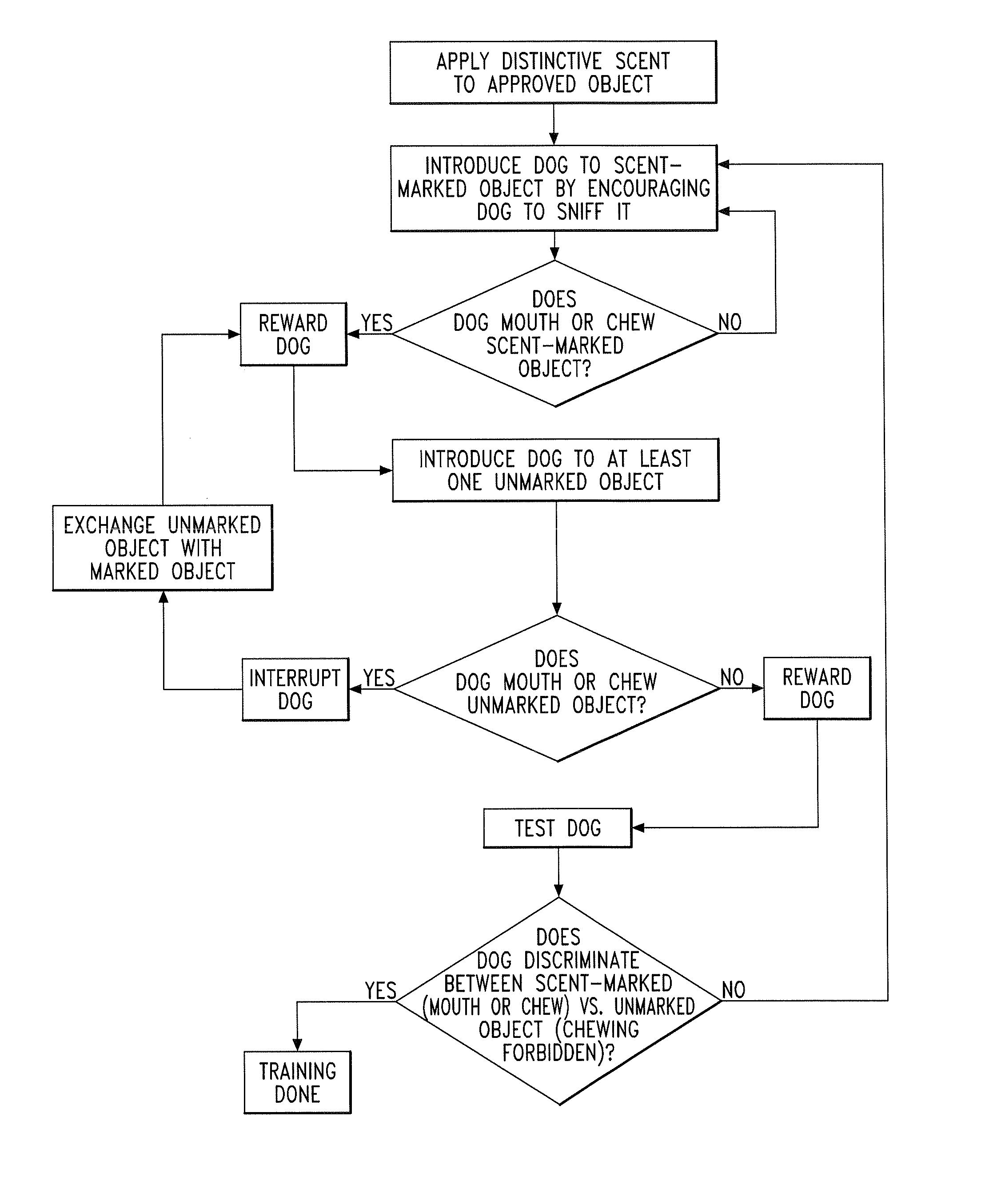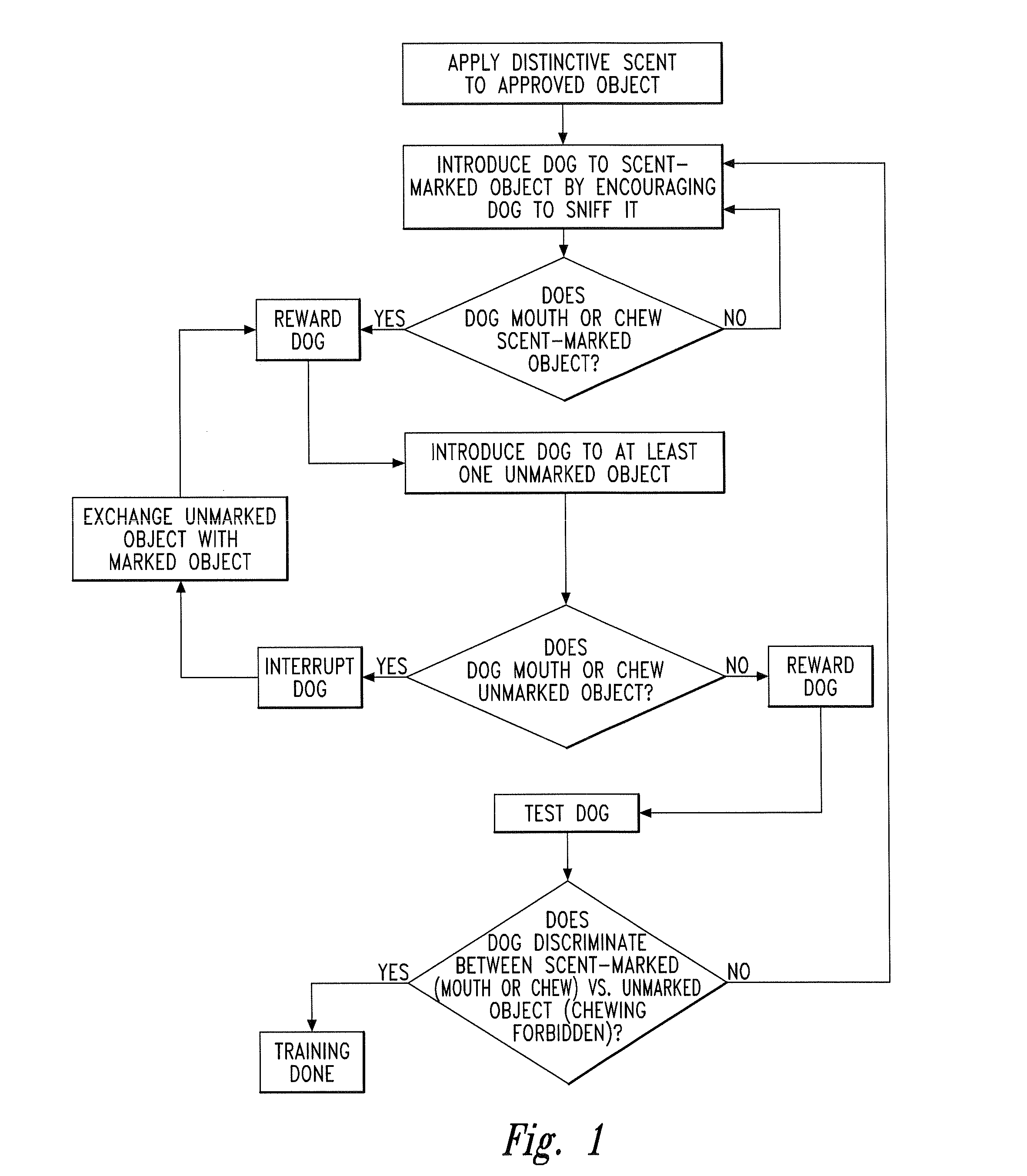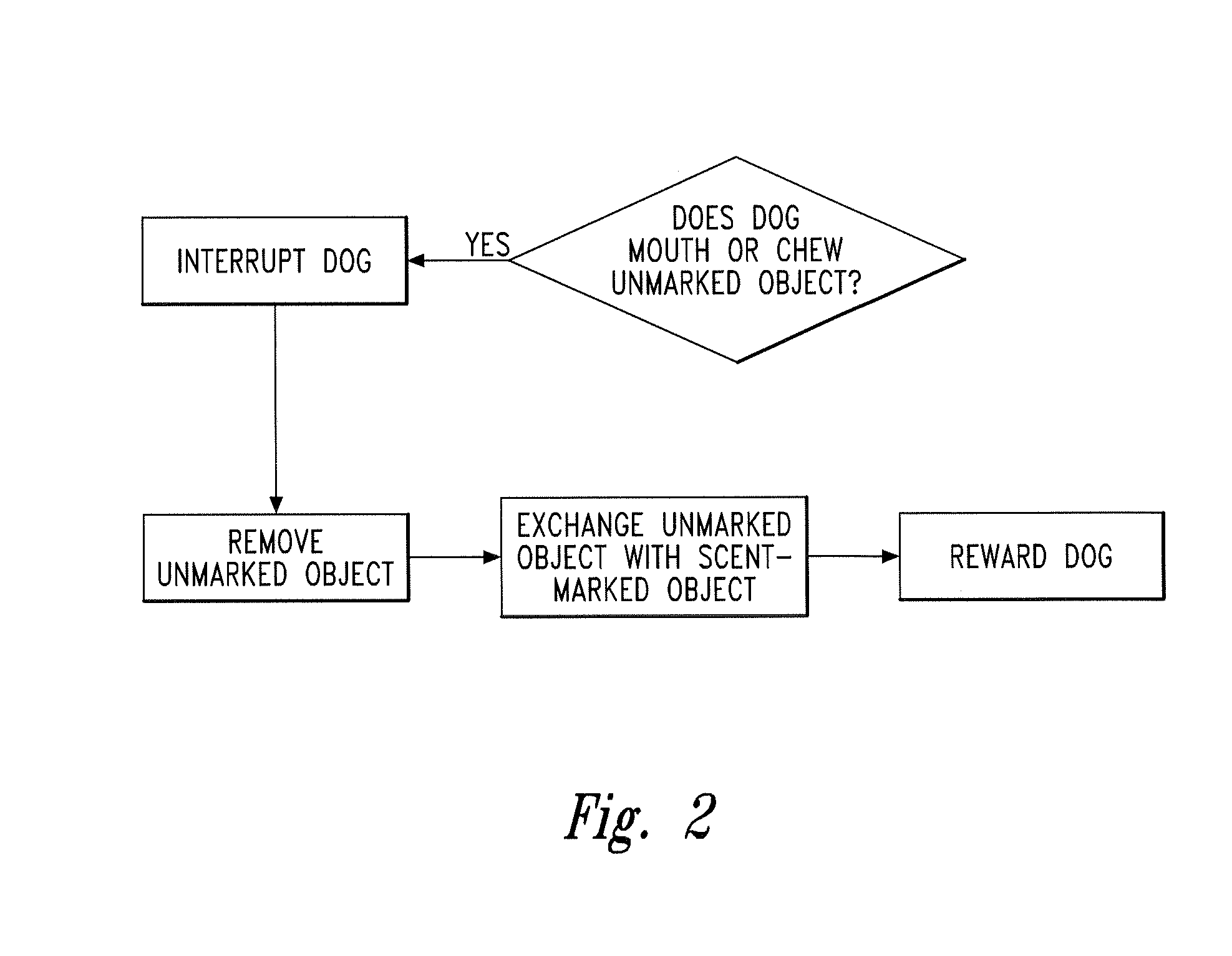Method of training a dog to chew acceptable objects through scent marking and chemical composition thereof
a scent marking and scent technology, applied in the field of positive reinforcement method of scent training a dog, can solve the problems of not being able to chew and/or mouth objects, and achieve the effect of facilitating desired learning, facilitating selection and mouthing of forbidden objects, and easy recognition of scents
- Summary
- Abstract
- Description
- Claims
- Application Information
AI Technical Summary
Benefits of technology
Problems solved by technology
Method used
Image
Examples
Embodiment Construction
[0026]Referring to FIG. 1, the present invention is a method of positively-reinforced training of a dog using scent to convey permission regarding what objects are acceptable for chewing and / or mouthing. The dog is introduced to an acceptable chewing object, such as a dog toy, that is marked with the distinctive scent. The dog is then encouraged to chew, mouth and play with the marked acceptable chewing object or other scent-marked acceptable chewing object. When the dog chews or mouths the scent marked object, the dog is rewarded. At least one unmarked object is introduced to the dog. If the dog ignores the unmarked item or investigates but does not mouth the unmarked item, the dog is rewarded. But if the dog mouths the unmarked item, the owner interrupts with a corrective action.
[0027]The dog may be rewarded by petting, ‘scratches’ behind the ears or other place the owner / breeder knows that the dog likes to be scratched, hugs, positive attention, treats, or in other ways that the ...
PUM
 Login to View More
Login to View More Abstract
Description
Claims
Application Information
 Login to View More
Login to View More - R&D
- Intellectual Property
- Life Sciences
- Materials
- Tech Scout
- Unparalleled Data Quality
- Higher Quality Content
- 60% Fewer Hallucinations
Browse by: Latest US Patents, China's latest patents, Technical Efficacy Thesaurus, Application Domain, Technology Topic, Popular Technical Reports.
© 2025 PatSnap. All rights reserved.Legal|Privacy policy|Modern Slavery Act Transparency Statement|Sitemap|About US| Contact US: help@patsnap.com



